14
Two members of North Cumberland Historical Society: Graham Brown (left) and Carl Demings (right)20th Century,
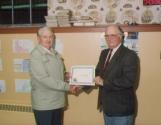 Credits:
Credits:North Cumberland Historical Society
15
In the 1970's the North Cumberland Historical Society started to gather historical information about this area in North Cumberland County, from about Tatamagouche to North Port along the Northumberlad Strait. They collected statistics, took measurements and inventoried possible historic sites.Some of the people involved were writer Francis Grant along with interested people, John MacQuarrie, James Dotten, Carl Demings, Harry Brown, and Roy Kennedy of Tatamagouche.
Carl Demings and John MacQuarrie worked on maping the dyked area and then calculating the land under dyking conditions.
16
Map of Tuttle Creek Dyke displaying calculations of the amount of land encompassed by the dyke18th Century. Circa 1720
Tuttle Creek, Wallace Bridge, Cumberland County, Nova Scotia.
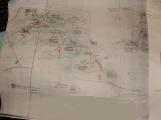 Credits:
Credits:Carl Demings
John Macquarrie
17
Cube of clay from interior of a dyke with shovel marks made circa 173018th Century. Circa 1730
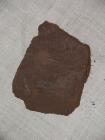 Credits:
Credits:Heather MacPherson, Museum Assistant
18
Re-creation of Acadian Dyke building methods; posts driven into foundation clay stabilizes the dykeModern Day
Wallace and Area Museum, Davison /Kennedy property
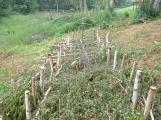 Credits:
Credits:David Dewar
19
Re-creation of Acadian Dyke and Aboiteau21st Century, 2010
Wallace and Area Museum, Davison /Kennedy property
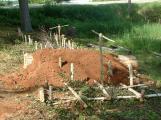 Credits:
Credits:Jim Reeves
David Dewar
20
Jim Reeves working on replica aboiteau, carving a tight seal for controlling device "the clapper"21st century 2010
Wallace and Area Museum, Davison /Kennedy property
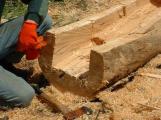 Credits:
Credits:Rebecca Reeves, volunteer
21
Replica of an aboiteau being hand carved to be inserted into a dykeModern Day 2010
Wallace and Area Museum, Davison /Kennedy property
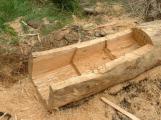 Credits:
Credits:Jim Reeves, Museum Assistant
22
Jim Reeves shows school students how an aboiteau works and how they were built21st Century. Circa June 2005
Wallace and Area Museum, Davison /Kennedy property
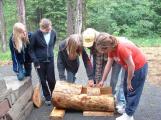 Credits:
Credits:Charlotte Moody
23
Replica of an Acadian aboiteau, which when placed through the dyke allowed land to drainRepica of 18th Century equipment. Circa
Wallace and Area Museum, Davison /Kennedy property
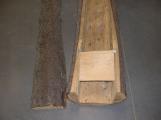 Credits:
Credits:Jim Reeves
24
Research project on Tuttle Creek Dyke (On left is 2009 Nobel Prize winner Willard Boyle!)21st Century, Circa 2006
Dyke on Tuttle Creek at Wallace Bridge, Cumberland County, Nova Scotia
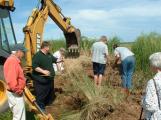 Credits:
Credits:Charlotte Moody
Willard Boyle, David Dewar, Marion Dotten, Betty Brown
25
Top of Tuttle Creek Dyke facing north-east; dyke fronts on Wallace Bay, facing north-east gales18th Century. Circa 1730
Tuttle Creek, Wallace Bridge, Cumberland County, Nova Scotia.
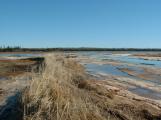 Credits:
Credits:David Dewar, Museum Curator
26
Showing the difference between lawn sod (left) and Marsh sod (right)21st Century
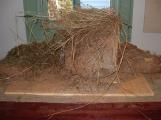 Credits:
Credits:Charlotte Moody
27
Interior View of Dyke18th Century, Cica 1730
Tuttle Creek, Wallace Bridge, Cumberland County, Nova Scotia.
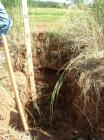 Credits:
Credits:Charlotte Moody